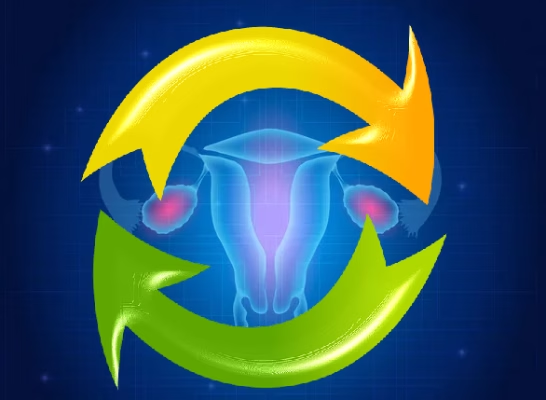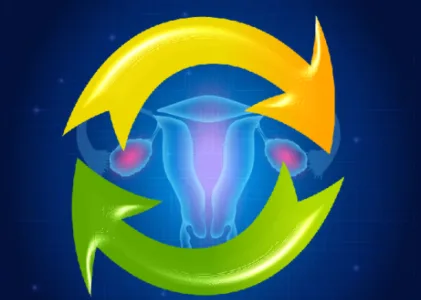The menstrual cycle: Have you ever wondered why this miracle move of a phenomenon happens monthly in almost half the world’s population? The menstrual cycle, shrouded by mystery and many a misconception, is indeed a mighty testament to the intricate workings of the human body. After all, it is not simply about periods or reproduction but a complex interplay of hormones affecting everything from mood to metabolism. Let us unwind this rather fascinating biological process, older than humanity itself.
The Menstrual Cycle—a Symphony of Hormones.
The menstrual cycle is almost like an orchestra, with hormones guiding the body to undergo changes in availing of physiological changes as they occur. These cycles may range from 28 days, although this may differ from one woman to another. It’s split into four significant phases or stages, all holding crucial roles in getting the body ready for the possibility of pregnancy.
Phase 1: Menstruation – The Reset Button
The most obvious, the initiation, is by menstruation or a period. This stage may last anywhere from 3-7 days and is where the uterine lining is shed. Though it may sound like just that—simple, menstruation actually is the body’s reset button to prepare one for another chance at pregnancy.
At this point, the hormone levels are at their lowest. Many people report cramps, tiredness, and mood swings. It’s also very important to remember that these all are very subjective experiences and might differ a lot – some just wouldn’t experience any problems at all during their periods, while others may need to slow down for a few days.
Phase 2: The Follicular Phase: Preparing for Ovulation
As menstruation ends, the body changes pace. The whole of the follicular phase leads up to ovulation. The pituitary releases follicle-stimulating hormone (FSH), stimulating ovaries to increase the production of small sacs—follicles containing immature eggs.
Usually, one follicle becomes dominant, enlarging in size and producing increasing amounts of estrogen. This increase in estrogen triggers several other events: lining the uterus, proliferating cervical mucus, and even affecting mood and energy. Many report a surge in energy and an increase in confidence during this phase.
Phase 3: Ovulation: The Main Event
Ovulation is the true star of this show. Around day 14 of a 28-day cycle, the Lutenising Hormone(LH) surge causes a rupture in the dominant follicle, releasing a mature egg. This egg starts down its track in the fallopian tube, where it might meet and be fertilized by sperm if they are present.
Not surprisingly, most women experience an increased sex drive about now – a clever biological trick to ensure that the sperm do actually get to meet the egg. Others may feel mild pain or discomfort in either one side of the lower pelvis, known as mittelschmerz.
Phase 4: The Luteal Phase – The Waiting Game
Following ovulation, the ruptured follicle becomes the corpus luteum and then begins to synthesize progesterone. This hormone is responsible for changes in the uterus and allows it to host the implantation of a fertilized egg. During this phase, body temperature will increase while, in some, premenstrual symptoms such as bloating, breast tenderness, and mood changes also arise.
In case pregnancy does not take place, the corpus luteum disintegrates, the levels of these hormones fall, and the cycle starts over with menstruation.
The Bigger Picture: More Than Just Reproduction
The menstrual cycle forms the basis for reproduction, but it makes much broader changes. In the cycle, hormonal fluctuations can affect energy, mood, sleep, and cognitive function—really, is the list quite endless? Some women say they feel heightened creativity during some phases of their cycles, while others more athletic at other times.
These are patterns to be understood, and their understanding can be very empowering. It makes it possible for one to act according to the body rather than in opposition to it, allowing for plans of activities and self-care routines to occur in conjunction with the natural rhythms of one’s cycle.
Conclusion: Embracing the Cycle
The menstrual cycle is beyond appreciation; it is something to be understood and respected. That is why during the study of it, we are capable of appreciating our body’s intricacies and the impact of this monthly cycle on our lives.
Whether you’re looking to conceive, manage your symptoms, or just begin to understand your body, a menstrual cycle is one very powerful subject. It is just amazing what the human body can be capable of and how delicate it often may be in balancing things in order to keep us running from day to day.
As we continue to break down taboos and misconceptions presently existing about menstruation, let’s celebrate this natural process for what it is: the marker of good health and a really interesting biomedical phenomenon picking up the beats of life itself.
For more on CRISPR and Gene Editing, check out the following related articles. Fractional Distillation of Liquefied Air: A Comprehensive Guide CRISPR and Gene Editing: Ethical Implications and Future Views AI in Healthcare – Remoulding medical Diognosis Sustainable Technologies – Protecting the Planet one Innovation at a Time Genetic Engineering – Designing Life From ScratchFrequently Asked Questions:
1. Can stress affect my menstrual cycle?
In fact, yes, it can. Stress can have a huge impact on your time of the month. It can delay periods, increase or decrease flow, or even skip it. That’s because chronic stress has the power to disrupt the delicate balance between the hormones that work together to regulate your period. When you’re stressed, your body produces cortisol, which disrupts the creation and balance of reproductive hormones. This is why handling stress with relaxation techniques, exercise, and self-care becomes really important in keeping everything in the right cycle.
2. Is it normal that my cycle length varies this much?
Yes, that is quite normal to be of different lengths. Though the average Cycle is usually considered to be 28 days, a normal cycle could be anywhere between 21 to 35 days in length. Things that will affect your cycle length include your age, stress, diet, and exercise in general. What’s more important is attending to what’s normal for you, not the comparison with some sort of arbitrary standard. If you do have a sudden, dramatic change in cycle length, that’s something worth discussing with a healthcare provider.
3. Can I get pregnant during my period?
Yep—It’s possible to get pregnant on your period, especially if you have a shorter cycle or longer periods. It has been demonstrated that sperm can hang around for as long as five days in the female reproductive tract. If you have a short cycle and start ovulation shortly after your period, there is likely to be some surviving sperm from period sex waiting for an egg to fertilize. This means that if you are trying to prevent pregnancy, consistent contraception is always necessary, regardless of your cycle position.
4. How does age affect the menstrual cycle?
Age plays a significant role in the menstrual cycle. In the teenage years, cycles can be irregular as your body adjusts to new hormonal patterns. Throughout your childbearing years, cycles typically become regular. As you enter perimenopause—typically in your 40s—cycles become less regular again, with differences in both flow and frequency. This is a result of changing levels of hormones in your body as it approaches menopause. It is, therefore, important to note that the changes are normal in the life cycle of the body.
5. Will diet exercise impact my Period?
Yes, both diet and exercise may have a significant impact on your menstrual cycle. A well-balanced diet that is rich in iron, calcium, and omega-3 can switch on a positive cycle and reduce symptoms such as cramps and mood swings. Regular exercise can help to balance hormones and lessen this discomfort. Too extreme diets or excess physical activity may bring about an irregular period, and sometimes, cause amenorrhea: “no-period.” It’s all about finding a balance that works with your body and your lifestyle.
References:
1. Mihm, M., Ganguly, S., & Muttukrishna, S. (2011). The normal menstrual cycle in women. Animal Reproduction Science, 124(3-4), 229-236.
2. Reed, B. G., & Carr, B. R. (2018). The Normal Menstrual Cycle and the Control of Ovulation. In K. R. Feingold (Eds.) et. al., Endotext. MDText.com, Inc.
3. Weschler, T. (2015). Taking Charge of Your Fertility: The Definitive Guide to Natural Birth Control, Pregnancy Achievement, and Reproductive Health. William Morrow Paperbacks.
4. Hawkins, S. M., & Matzuk, M. M. (2008). The menstrual cycle: basic biology. Annals of the New York Academy of Sciences, 1135, 10-18.
5. Dullo, P., & Vedi, N. (2008). Changes in serum calcium, magnesium and inorganic phosphorus levels during different phases of the menstrual cycle. Journal of Human Reproductive Sciences, 1(2), 77-80.


